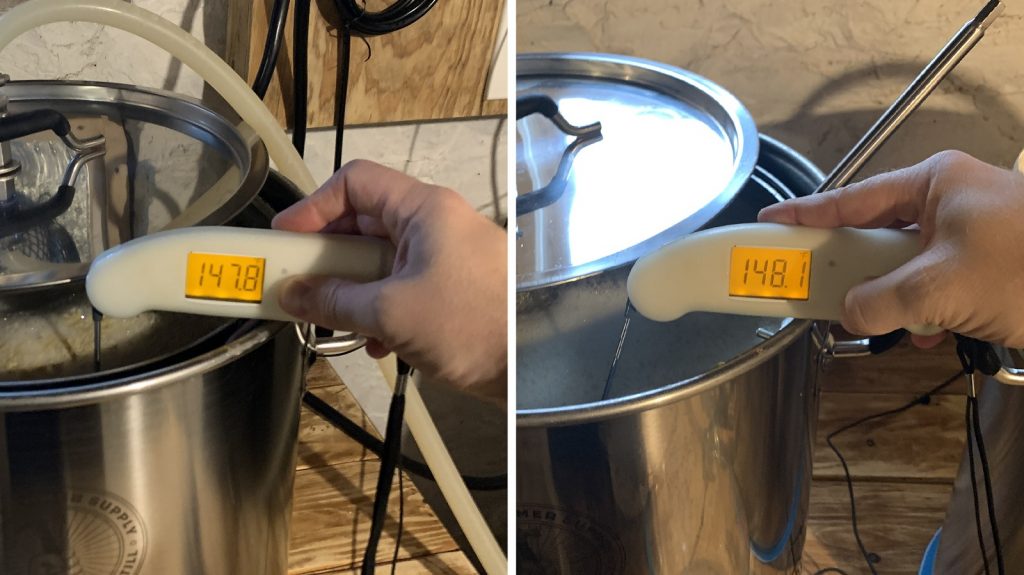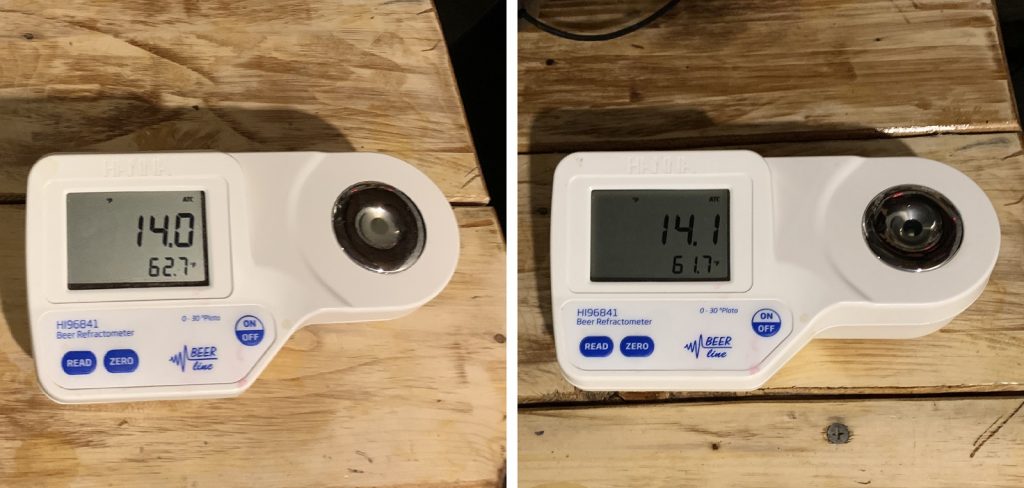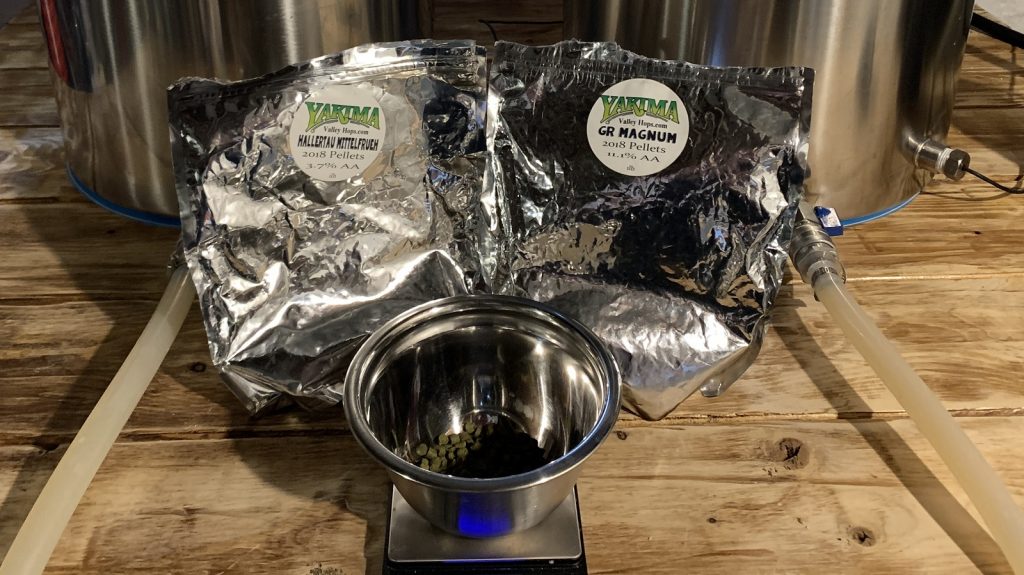Author: Phil Rusher
According to diehard Reinheitsgebot purists, the ingredients used to produce beer must be limited to barley, hops, water, and yeast. However, there are cultures the world over that have relied on the use of non-grain fermentables in their brewing for nearly as long as beer has existed, with one of the more common being sugar.
There are a number of different types of sugar that come from myriad sources, for example during the mashing process, starches from malted barley are enzymatically converted into maltose, a disaccharide made up of two linked glucose units. The amount of maltose present in wort is largely a function of the amount of malt used, so one way brewers can increase ABV while having a minimal effect on flavor and body is to use a simple sugar such as sucrose, also known as table sugar. A disaccharide that consists of of a glucose and fructose unit, sucrose is often added during the boil as a means of upping the OG and fermentability of wort, which is believed to result in a dryer, crisper beer than one made to the same strength with all malt.
There are a number of styles that benefit from the use of sucrose such as Double IPA and Belgian Golden Strong, both of which are stronger beers that can be a bit rich when made with just malt. However, sucrose is also often used in certain lower alcohol styles as a way to encourage maximum dryness. With a past xBmt showing tasters couldn’t tell apart a Belgian Tripel made with table sugar from one made with all malt, I was curious of how the use of sucrose would impact a lower strength Saison and put it to the test.
| PURPOSE |
To evaluate the differences between a Saison made with all malt and one made with 10% sucrose.
| METHODS |
For this xBmt, I designed a Saison recipe using under-modified Pilsner malt with a dose of wheat malt, replacing a portion of the Pilsner malt with table sugar for one batch.
If You Say So
Recipe Details
| Batch Size | Boil Time | IBU | SRM | Est. OG | Est. FG | ABV |
|---|---|---|---|---|---|---|
| 5.7 gal | 60 min | 27.6 IBUs | 3.1473046 | 1.057 | 1.004 | 7.1 % |
| Actuals | 1.057 | 1.003 | 7.1 % | |||
Fermentables
| Name | Amount | % |
|---|---|---|
| Mecca Grade Gateway: Undermodified Wind Malt | 10.25 lbs | 82 |
| Mecca Grade Wickiup: Red Wheat Malt | 1 lbs | 8 |
| Sugar, Table (Sucrose) | 1.25 lbs | 10 |
Hops
| Name | Amount | Time | Use | Form | Alpha % |
|---|---|---|---|---|---|
| Hallertau Magnum | 20 g | 60 min | Boil | Pellet | 11 |
| Hallertauer Mittelfrueh | 20 g | 10 min | Boil | Pellet | 3.7 |
| Hallertauer Mittelfrueh | 30 g | 1 min | Boil | Pellet | 3.7 |
Yeast
| Name | Lab | Attenuation | Temperature |
|---|---|---|---|
| Napoleon (B64) | Imperial Yeast | 80% | 65°F - 78°F |
Notes
| Water Profile: Ca 50 | Mg 0 | Na 28 | SO4 105 | Cl 45 NOTE: an additional 2 lbs/0.91 kg of Gateway malt was used in the all malt batch |
Download
| Download this recipe's BeerXML file |
After collecting the water for each batch and adjusting both to my desired profile, I weighed out and milled the two sets of grain.
I opted to do a step mash for this batch due to the use of undermodified malt, starting at a 122˚F/50˚C protein rest for 20 minutes before raising the temperature to a saccharification rest of 148˚F/64˚C.

After another 20 minutes, I raised the temperature to 158˚F/70˚C and left them alone for 20 more minutes before removing the grains, at which point I began heating the worts up and measured out the kettle hop additions.
Shortly after reaching a boil, I added 1.25 lbs/0.57 kg of sucrose to one of the worts while the other was left alone.
Following each 60 minute boil, the worts were quickly chilled with a plate chiller on their way to sanitized Brew Buckets.
Refractometer readings showed the worts had a very similar OG.

Given my cooler groundwater temperature, I had to warm the worts up to my desired fermentation temperature. While waiting on that, I made a couple vitality starters of Imperial Yeast B64 Napolean using remnant wort, pitching one into each batch 4 hours later when the worts were at 68°F/20°C.
The beers were left to sit in my basement that maintains a temperature of 62-66°F/17-19°C) for 3 days before I used heat wraps to raise the fermentation temperature to 72°F/22°C, where they sat for an additional 5 days.
With visible signs of fermentation activity absent, I allowed the beers to cool to ambient temperature over a couple days before taking hydrometer measurements showing the one made with sucrose finished slightly lower than the all malt batch.

At this point, the beers were transferred to sanitized and CO2 purged kegs.
The filled kegs were placed in my keezer and burst carbonated overnight before I reduced the gas to serving pressure. After 2 weeks of conditioning, they were carbonated and ready for evaluation.

| RESULTS |
Due to social distancing practices as a result of the COVID-19 pandemic, data for this xBmt was unable to be collected in our typical manner. As such, temporary adaptations were made involving the author completing multiple semi-blind triangle tests in as unbiased a way as possible.
Utilizing 4 opaque cups of the same color where 2 were inconspicuously marked, one set was filled with the all malt beer while the other set was filled with the beer made with sucrose. For each triangle test, 3 of the 4 cups were indiscriminately selected, thus randomizing which beer was the unique sample for each trial. Following each attempt, I noted whether I was correct in identifying the unique sample. Out of the 10 semi-blind triangle tests I completed, I needed to identify the unique sample at least 7 times (p<0.05) in order to reach statistical significance. In the end, I correctly identified the unique sample just 5 times (p=0.213), indicating my inability to reliably distinguish a Saison made with all malt from one that used a portion of table sugar in place of some malt.
When sampling these beers during the conditioning period, prior to being packaged, I thought I detected a very slight difference in bitterness between them. However, once in the keg and carbonated, those differences disappeared, leaving the beers perceptibly identical to my palate.
| DISCUSSION |
While not an absolute necessity for any particular type of beer, the use of simple sugars is viewed as a good way to drive attenuation and dryness in certain styles, namely those of a Belgian origin such as Saison. One common simple sugar used in brewing is sucrose, also known as table sugar, which some have claimed can impart beer with an undesirable cider-like characteristic. My inability to reliably tell apart a Saison made with all malt from one where a portion of the malt was replaced with table sugar suggests any impacts on aroma, flavor, and mouthfeel were imperceptible.
Considering these results in light of those from a past xBmt showing tasters could not distinguish Belgian Tripels made with and without table sugar, the evidence seems be indicating this simple sugar can be used to replace a portion of malt without a noticeable impact on flavor. What’s curious is that in a prior xBmt, I was able to tell apart a Double IPA made with table sugar from one made with dextrose, which suggests the latter may in fact impart a distinct flavor when used to replace a portion of malt. It’s also possible that the characteristic ester and phenol profiles in Belgian styles served to cover up any differences, and that a similar comparison with a cleaner style of beer would yield difference results.
Considering the good results I’ve personally had when using table sugar in beers, as well as the fact I was unable to tell these xBmt beers apart, I have no plans to stop using this convenient adjunct. In addition to including a portion of sugar in certain styles where its use is expected, I’ve found it can be particularly helpful in cases where I have limited mash tun space and want to make a higher OG beer without affecting aroma or flavor.
If you have any thoughts about this xBmt, please do not hesitate to share in the comments section below!
Support Brülosophy In Style!
All designs are available in various colors and sizes on Amazon!
Follow Brülosophy on:
FACEBOOK | TWITTER | INSTAGRAM
If you enjoy this stuff and feel compelled to support Brulosophy.com, please check out the Support page for details on how you can very easily do so. Thanks!




















7 thoughts on “exBEERiment | Impact Adding Table Sugar To Wort During The Boil Has On A Saison”
Napolean is a diastaticus strain. I’m surprised this wasn’t mentioned in the write-up. You weren’t affecting dryness or “driving attenuation” by using this strain, you were just comparing beers with a 10% difference in “maltiness”. Given the nature of the malts, it’s no surprise you would not be able to perceive a difference in these beers.
Forgive my ignorance and I’ll forgive your lack of an explanation. So, explain. Thanks.
“Typical” brewing strains of Saccharomyces cerevisiae cannot metabolize dextrins or any other carbohydrate beyond maltotriose. They lack the genes coding for the enzymes that break down these carbs. Diastaticus refers to variants of S. cerevisiae that still have these genes. Thus, strains of S. cerevisiae var. diastaticus–which Napolean is–can metabolize virtually any carbohydrate found in wort. In this experiment, the worts had the same OG, and therefore from the yeast’s perspective, these worts were identical in fermentability, regardless of their starting ratios of simple sugars-to-dextrins. It was a foregone conclusion that the all-malt wort would attenuate to the same dryness as the sucrose wort (the observed 1-pt difference is meaningless as far as I’m concerned). No difference in dryness could be achieved using this yeast. Which means this experiment is really just testing whether a difference in malt flavor could be perceived. But these malts are so lightly kilned and so bland in flavor–especially against the backdrop of saison phenolics and esters–that it’s so surprise no difference was perceived.
You’re correct about the capabilities of STA1 variants, but you are making a lot of assumptions about the sensory aspects of these beers.
They say a little knowledge…The presence of Sta-1 gene does not indicate it’s pattern of expression, that’s as far as we’ve got with commercial yeast suppliers i’m afraid at the moment. I’ve seen beers with a higher SG fermented with dry beer enzyme (a-amylase) drop even lower. Taken together in the case of this beer this may indicate either the yeast giving up (unlikely at 7.1%) or every and ‘any carbohydrate’ is not being broken down by this strain despite being a diastaticus strain. Secondly dextrins will be broken down into glucose…table sugar is composed of glucose and fructose. Yeasts do behave slightly different when fermenting glucose or fructose mediums. They’re small differences, but the entire point of this is to tease out small differences and see if they’re perceivable to the average taster.
Just because a difference isn’t expected doesn’t mean it isn’t worth testing. And although I think you have an excellent justification for your assertion that a difference would not be expected, many brewers would certainly disagree. Indeed, articles about brewing saisons almost always emphasize the need to produce a highly fermentable wort by managing the mash conditions and/or adding sugar, and then go on to recommend a STA1 strain (which many saison strains are). Clearly the authors of these articles expect the relative amounts of simple sugars to drive some sort of character impact despite the metabolic capabilities of the yeast.
I had not heard of STA1 strains so I learned a lot in these comments. Also learned that an aggressive tone may get the conversation off on the wrong foot but that a few friendly and expository comments soon get things back on track. Well done.